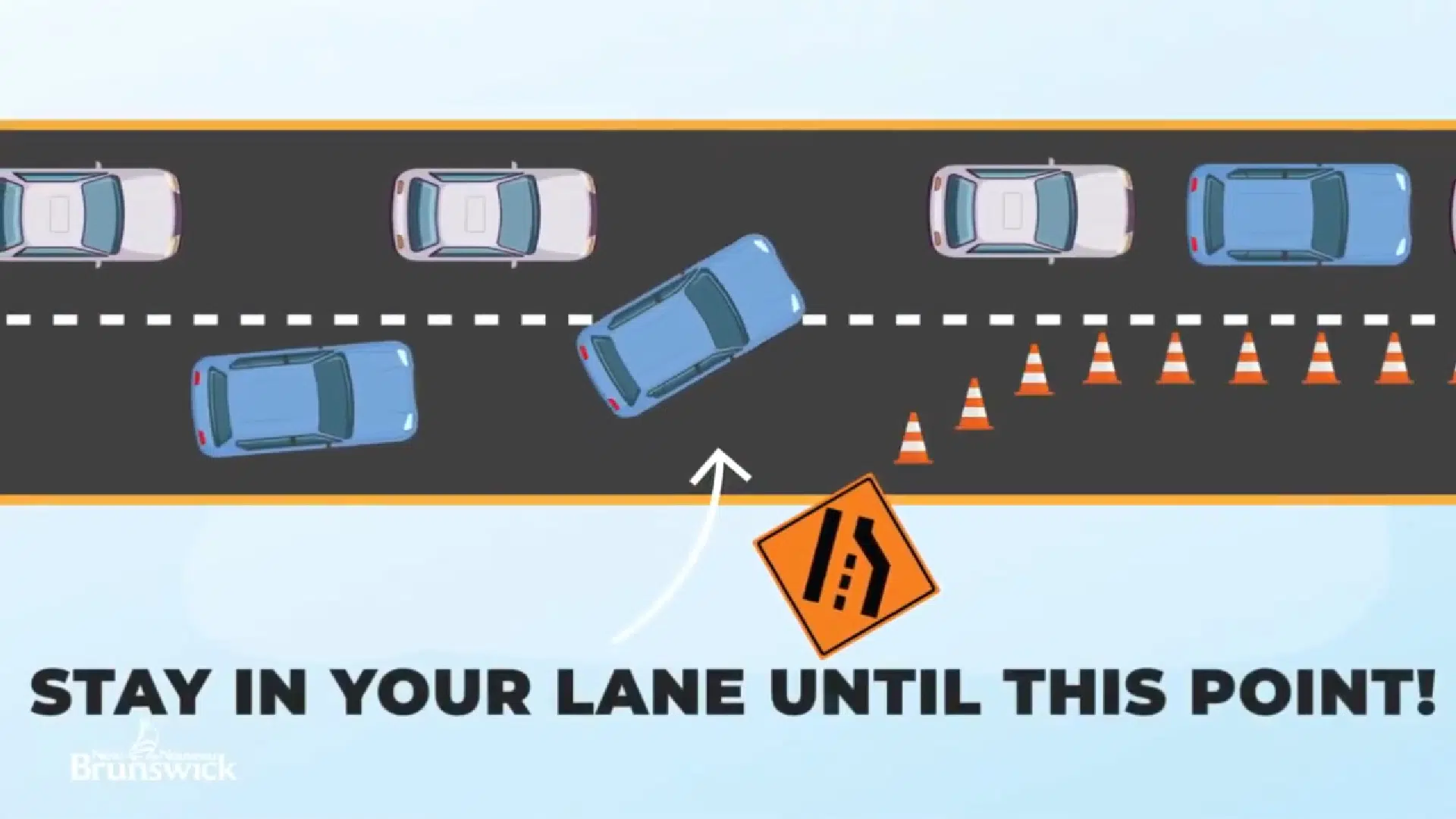Lane closures are synonymous with construction season, but long lineups do not have to be.
Transportation officials are promoting a new maneuver to help alleviate traffic headaches in construction zones.
The “zipper merge” is a common practice throughout many parts of North America, but not so much in New Brunswick.
Mark Taylor, communications director with the Department of Transportation and Infrastructure, said the maneuver is just like it sounds.
“Put simply, drivers use both lanes fully to the point of closure, then alternate in a zipper-like fashion into the open lane,” said Taylor. “One car moves, the next car moves in, the next car moves, the next car moves in.”
Taylor said the zipper merge maximizes available road space, fostering fairness and courtesy when everyone abides by it.
Many drivers have a tendency to move into the open lane as soon as they see the upcoming closure, but Taylor said you should avoid doing that.
“It’s business as usual as far as the driving is concerned, but when you get to that point where the lane is closing, that’s when you have to implement the zipper merge,” he said.
According to CAA Atlantic, research shows the zipper merge can reduce congestion by as much as 40 per cent.
The automobile association says maneuver works best in traditional congestion situations like construction zones.
“If a lane closure is due to a crash or breakdown, reduce your speed and move over as soon as possible to avoid endangering emergency workers and/or tow truck operators,” reads CAA Atlantic’s website.
Meanwhile, Taylor said the province has produced a short video in an effort to show motorists how the merge works.
“I know it’ll take some time for people to get used to this concept,” he said.
A zipper merge is an important maneuver for motorists to understand. So, what is a zipper merge you ask?
Watch and learn! pic.twitter.com/EfmkgGNFja
— Government of NB (@Gov_NB) March 25, 2022




